Part I – In the beginning...
The year was 1971. Intel released its first microprocessor, the 4004, which powered the Busicom calculator. The 8008 was released the following year. In 1974, the 8080 was released. The 8080 became the brains of one of the first personal computers - the Altair, allegedly named after a destination of the Starship Enterprise from the Star Trek television show. Computer hobbyists ordered kits for the Altair for $395 (£318 approx). Within months, it sold tens of thousands, creating the first PC back orders in history.

In 1975, Steven Jobs and Stephen Wozniak built computers in Jobs’ parents’ garage. In 1976, they sold 600 units of the first Apple computers for $666.66 (£536 approx). In 1976 the Beatles held their first West Coast fan convention in Seattle, Washington. Just over 2,000 people attended the two-day show.
In 1978 the 8086 and 8088 were released and the IBM PC was born. The 8088's success propelled Intel into the ranks of the Fortune 500 and Fortune magazine named the company one of the "Business Triumphs of the Seventies." In 1980 the Olympic Games were held in Moscow, and the USA did not participate. The 4th Annual Beatle Fest Convention was held in Chicago, Illinois. Jimmy Carter was in the White House, and Margaret Thatcher had just come to power in Britain, with an unprecedented switch of the popular vote.
But so what? The real story is that the first flight simulations appeared in 1980, with FS1 for the TRS-80. The world was in travail with the personal computer, and computer gaming was born.
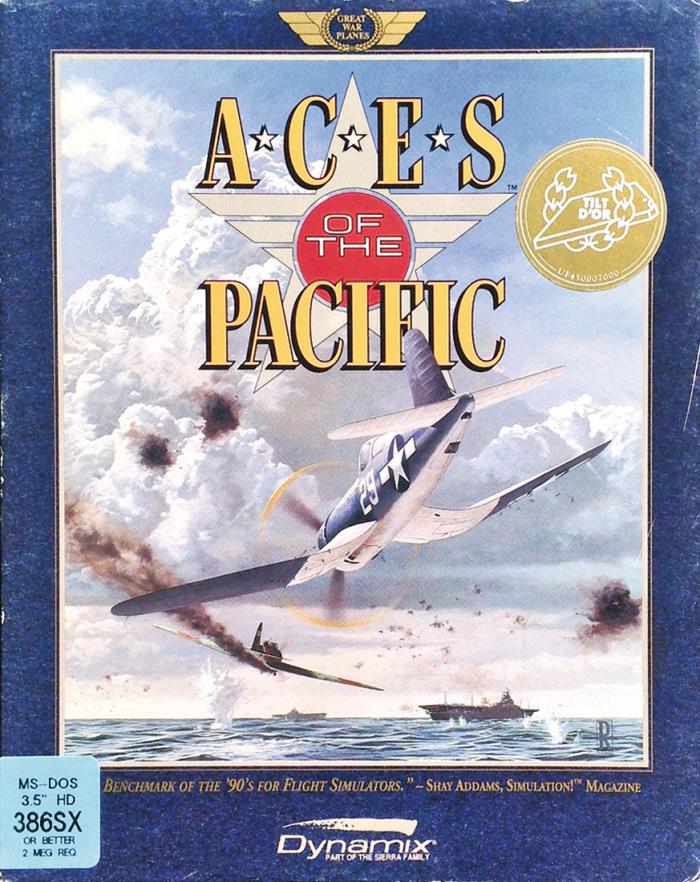
The early years
Fast forward to 1982. Ronald Reagan was in the White House and Margaret Thatcher was firmly anchored in Downing Street. In 1982, the 286, also known as the 80286, was released. The 286 was the first Intel processor that could run all the software written for its predecessor. Within six years of its release, there were an estimated 15 million 286-based personal computers installed around the world.
In 1982, an almost unknown company by the name of Microsoft released its first flight simulator for the IBM PC. Flight Simulator wasn’t much to talk about, but the excitement it generated was substantial.
In 1983, a startup company by the name of MicroProse released Hellcat Ace for the Atari. Digital Integration got its start in the same year with Fighter Pilot. In 1983, Jet was released for the PC by Charles Guy, using technology developed by Bruce Artwick for Flight Simulator.
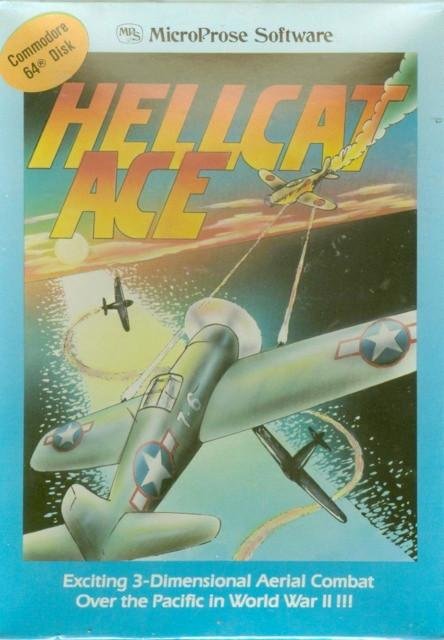
In January 1984, the Macintosh was unveiled and Jet was one of the early simulations released for both the PC and the Mac. Later in 1984, MicroProse released Spitfire Ace, a game developed by Sid Meier. In 1985, Steven Jobs was fired from his job as CEO of Apple Computers.
The Strike Eagle line was born in the same year when F-15 Strike Eagle was released by MicroProse in a port for the PC. The code was a whopping 53K.

Despite the slim code and 16-colour graphics, the marketing machine was beginning to work overtime. Ads for Strike Eagle appeared in the major gaming journals, reading much like they do today.
“Power on the afterburners and feel the g forces slam against your seat in this sophisticated simulation of the F-15 Strike Eagle. From the realistic electronic cockpit, you can drop M-82 bombs on a Libyan oil refinery or fire air-to-air missiles at a Syrian fighter. Other games may have some action, but only F-15 Strike Eagle captures the true-to-life experience of today’s combat jet pilot.”
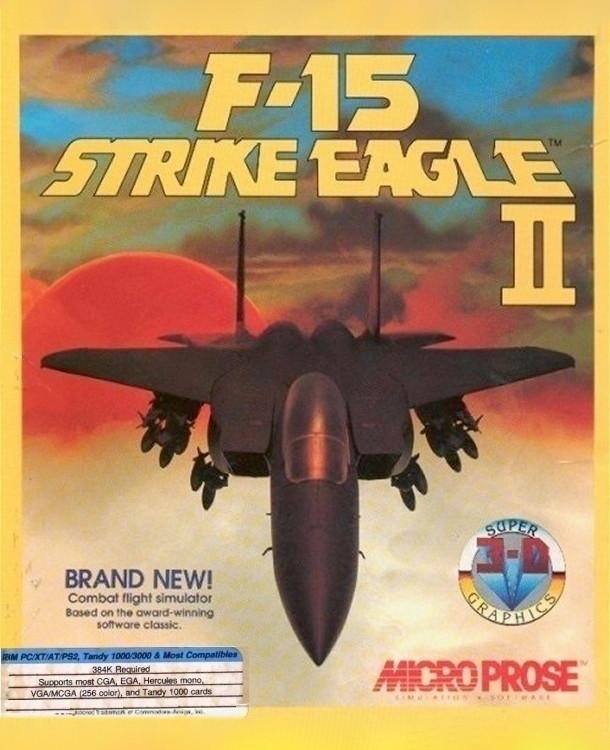
In 1986 Ace was published by Cascade Games, billed as 'the Ultimate Jet Combat Simulator.' In reality, the simulations up to this point were point-and-shoot type of affairs. It was difficult to develop any sense of situational awareness and sometimes even difficult to tell when you hit something. Damage models were almost non-existent and avionics and weapon systems really weren’t simulated at all at this time.
Physics and flight, however, were concerns and the challenge was to create anything remotely recognisable as a flight model in a few kilobytes of code. The average PC at this time ran at 12MHz and had 64-128k of total memory.
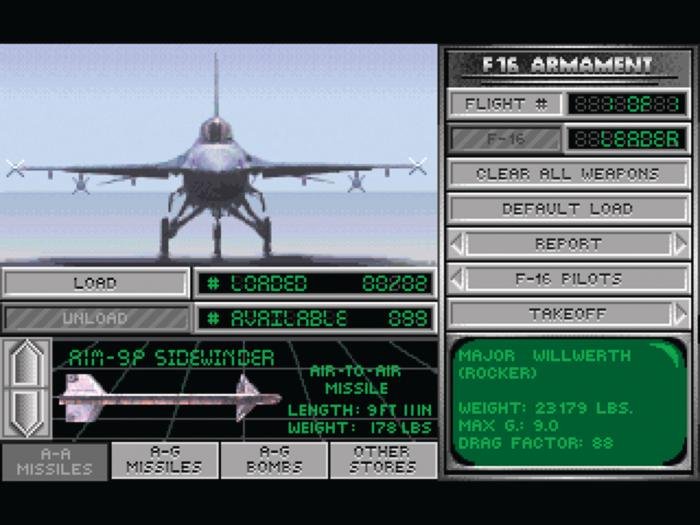
If there is a landmark year it was 1987. In 1987 Air Warrior was born, developed by Kelton Flinn, an early try at online gaming. Air Warrior made its debut on the Mac II with simple black and white graphics, no real physics model and lacking ballistics and other things we now deem as crucial to any decent flight sim. It wasn’t long before Air Warrior appeared on the PC.
In 1987, Chuck Yeager’s Advanced Flight Trainer appeared, attempting to teach the basics of flight on the PC, a preparation needed for the games that would follow. In the same year, the first iteration of the Falcon series was released by Spectrum Holobyte and Gunship was released by MicroProse.
Many simulation fans (including myself) count one or more of these last four titles as their ‘first love’ in PC gaming or at least their introduction to the hobby. Falcon, in 1987, preferred an IBM AT and required 256K to fly under DOS 2.x. 256K wasn’t cheap at the time and not everyone could afford the 12 or 16MHz AT. It was still too early for the 640K machines or for 256 colour VGA graphics but the excitement was kindled.
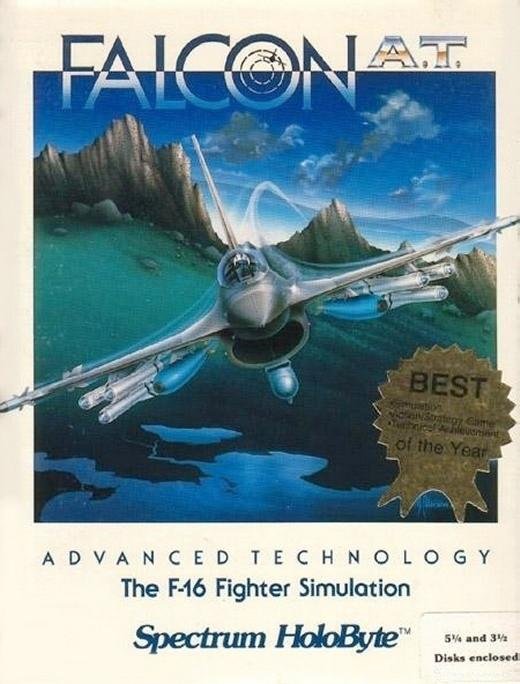
In 1988, there were at least three significant releases for the PC and among them were Falcon AT and Battlehawks 1942. Battlehawks marked Lucasfilm Games’ entry into the genre, and Falcon AT was a landmark in its own right. A friend remarked: “I recall walking into the computer department of a large pharmacy chain and seeing something incredible running with 16-colour graphics. It was perfectly fluid. The voices were incredible. For the first time, I was seeing something that approximated the real world, including joint tactics. It was Falcon AT that pushed me to upgrade to a 386/33.”
With Falcon AT, Spectrum Holobyte established its name as a premiere simulation developer. The citation from a simulation fan establishes the intimate relationship between the growth of hardware and software. The gaming industry was rapidly establishing its own identity and simulation fans were becoming identifiable as a group.

The growth years: 1990-1996
In 1989, Ronald Reagan left the White House and there was an explosion of new simulation titles. Dynamix released A-10 Tank Killer, Blue Max ran in 256 colours (VGA) and MicroProse released F-15 Strike Eagle II. I don’t remember much about A-10 Tank Killer but I had seen the ads for Strike Eagle II and I ordered it via mail.
Strike Eagle II’s environment was as interactive as that in Falcon AT. SAM sites were a constant threat and bandits would pick up the chase on your flight home. This kind of dynamic environment was a huge leap in technology.
Strike Eagle II also offered an expanded view set. The player could look to the side or to the back and see the world outside, as well as parts of the cockpit. Suddenly the aircraft itself had internal dimensions.
Furthermore, Strike Eagle II offered the first ‘Director Mode’, where you didn’t have to fly but could simply sit back and watch the action. This mode continued to evolve until DiD appeared with its engaging Smart View system in EF2000 in 1994.
With 256 colours, Strike Eagle II was glorious for its time. VGA graphics were still new to the scene and a good VGA board, such as the Paradise one I ordered in 1988, set me back around $200 USD (£160 approx).
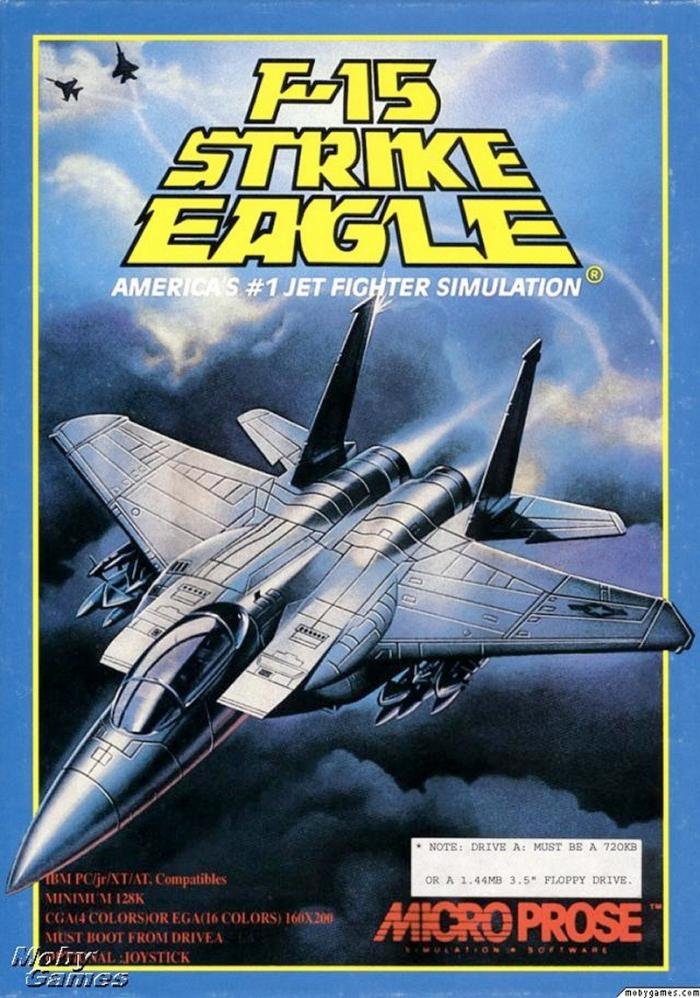
In the same year, Microsoft released Flight Simulator 4.0. This was a true flight simulator since it modelled the forces of flight as well as aircraft avionics. The game itself looked good at the time and spawned many add-ons. Many flight sim fans got their start in the genre with MFS 4.0.
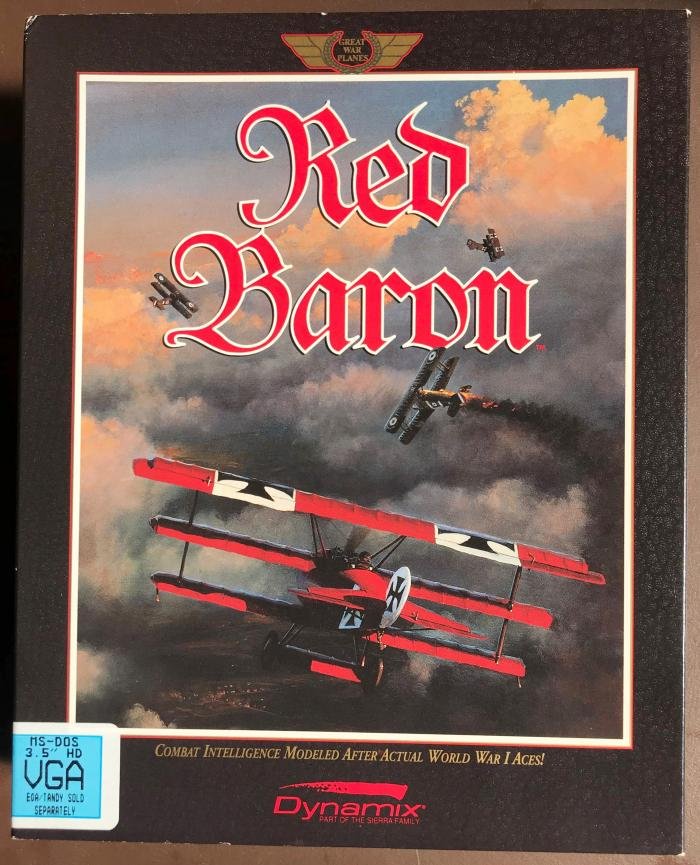
One area that still needed serious improvement was sound. Sound hardware was not keeping pace with the software, though I believe I had my first Sound Blaster around 1989. Up to this time, there was no real standard, so compatibility was hit-and-miss. This, as well as memory requirements and processor limitations, meant that digitised sound had not yet appeared in flight sims. The engine sounds in the Cessna in Microsoft Flight Simulator was more like a buzz saw than an aircraft engine and the rate changed while the tone varied little.
1989 also saw the release of a classic, Lucasfilm Games’ Their Finest Hour (Battle of Britain). George Lucas was a World War Two buff, and his interest inspired the famous Star Wars dogfight scenes. Incredibly, even this game still fits within the 640K limits imposed by DOS.

But Their Finest Hour sported the first-ever dynamic campaign system. Designed by Lawrence Holland and programmed by Holland and Lincroft, the game was years ahead of its time. Even the manual was unusual: spiral-bound and with a great deal of historical detail included, with many quotations and pictures from World War Two.
In August 1990, the Gulf War erupted. John Major came to Downing Street in the same year and military flight simulations exploded, with at least 11 PC titles. The classics included Chuck Yeager’s Air Combat, Secret Weapons of the Luftwaffe (SWOTL) and Air Warrior for the public domain.
Air Combat had one of the first ‘gun camera’ features and pop-up windows that helped you keep track of the target. This feature would later be refined and show up again in USAF, USNF, ATF and WWII Fighters. Developed by Brent Iverson, the game loaded with an 8-bit voice sample from Chuck Yeager: “It’s a great day for flying!” This was Iverson and Electronic Arts’ first entry into the combat flight simulation genre.

SWOTL was another 256-colour game and allowed the player to fly seven different Luftwaffe aircraft, including three experimental jets like the Gotha 229 flying wing. Following on the heels of Their Finest Hour, this Lawrence Holland game used a refined dynamic campaign engine and included the same features as the earlier Battle of Britain simulation.
The detail in SWOTL was amazing for its time. Tour of Duty mode allowed the player to select from three different careers: as a fighter pilot, a bomber pilot or as bomber crew. The average tour was from 25 to 35 missions in length. Full records were kept of all flights, weapons could be selected and loaded, and the flight roster could be managed by the player.
Players could choose from the Flight School, Historical Missions, Custom Missions or the Tour of Duty mode. The fifth choice was the dynamic Campaign mode, which allowed the player to command various large-scale campaigns and even alter the outcome of history.
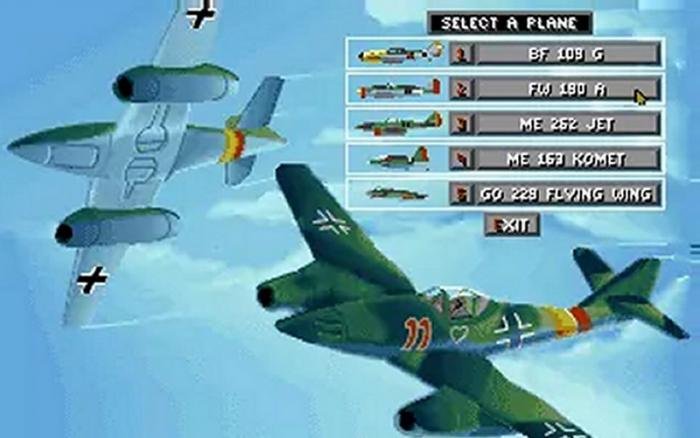
The campaign mode in SWOTL didn’t only involve flying but also economic management. On the German side, in addition to directing fighter defence, the player controlled the production of war material, choosing what was produced at aircraft assembly plans, engine factories, oil refineries and even research and development factories. These decisions affected later availability of aircraft and aspects of the campaign.
On the US side, the main concern was to select strategic targets to cripple German production. The player created and selected flight groups and then planned the raid and then flew in it. Sounds a little like the later MicroProse’s B-17 simulation, doesn’t it?
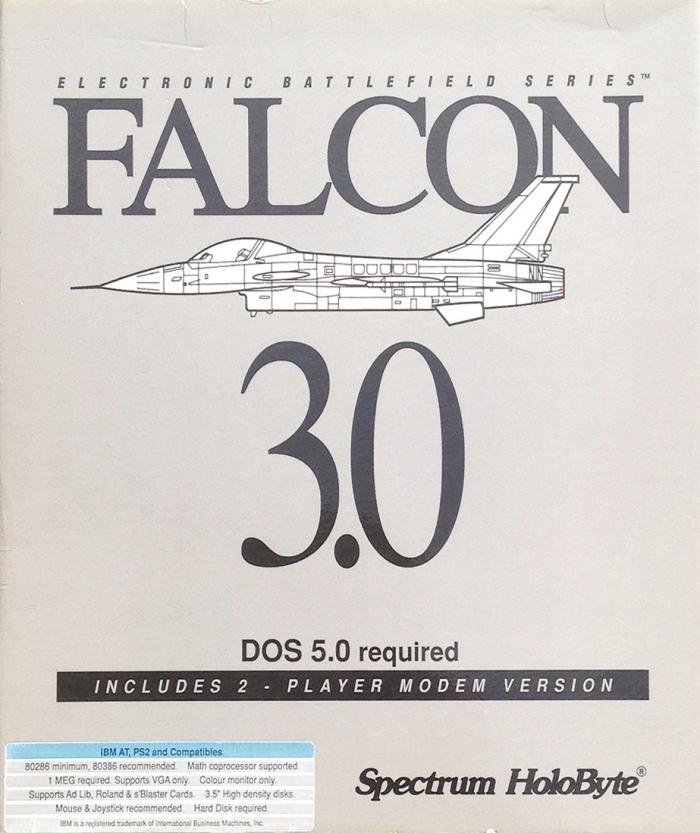
1990 and 1991 saw the release of other popular titles for the PC, such as Dynamix’s Red Baron and Birds of Prey from EA; the latter of which included IFR (in-flight refuelling)! MicroProse’s F-117A Stealth Fighter included carrier launches and landings. An atmospheric game, F-117A began to show some sophisticated avionics and weapon systems and required some tactical thinking to survive.
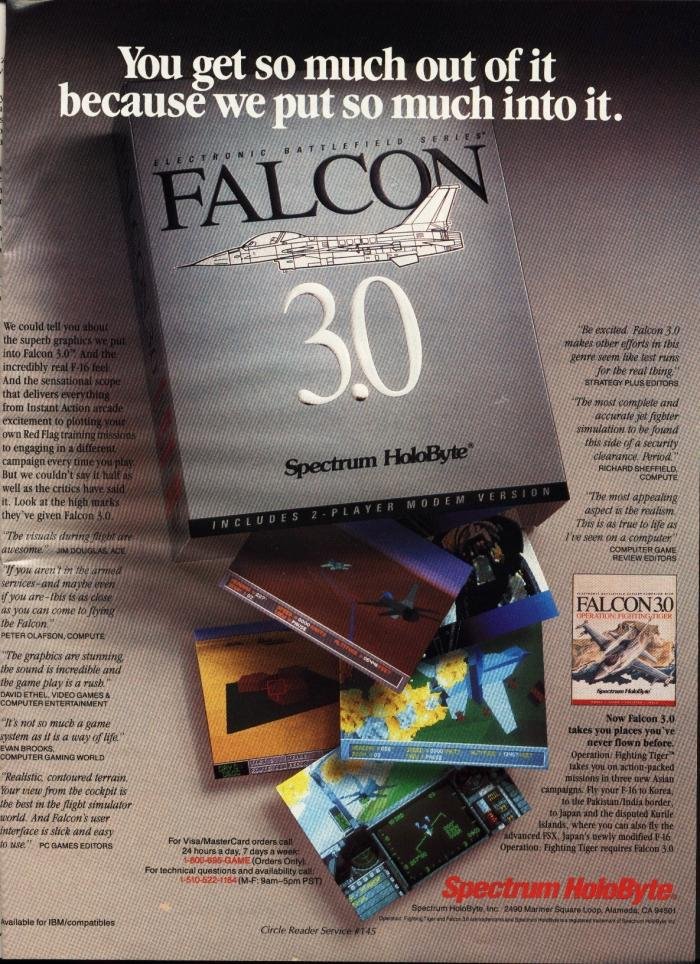
Other titles in 1991 included Falcon 3.0, Gunship 2000, Jetfighter II and MiG-29M Super Fulcrum. Of all the titles, Falcon 3.0 heralded a new generation in simulation technology, with a dynamic campaign system in a persistent world. And that’s where we will pick up the story in Part II in the next issue of PC Pilot.
By Leonard ‘Flightdoc’ Hjalmarson

